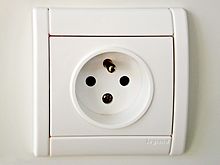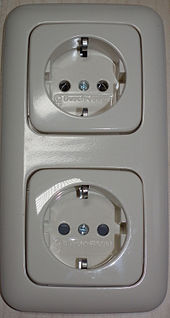Do the swiss have lots of deaths from electrocution?
No, I think most are via lethal injection in posh white clinics.
Do the swiss have lots of deaths from electrocution?

Neutral is live,
The German sockets do not have any polarity, you can simply turn the plug around, so any fuse has to be at consumer unit not plug, but you should be OK the Swiss know all about being neutral.





Actually the Italianis slightly pushed to one side so their L type is not reversible,

Sorry yes got it mixed up with this oneYou are wrong. The 3 pins are all in line.
http://www.plugsocketmuseum.nl/Italian1.html

Actually the Italianis slightly pushed to one side so their L type is not reversible,
Well, yes, but the wrong way round.The German sockets do not have any polarity, you can simply turn the plug around, so any fuse has to be at consumer unit not plug,
Are not these two sentences contradictory or have I not understood that which you are trying to explain?UK only requires a fuse in the plug because the consumer unit OPD is too highly rated for the appliance flexes.
Although most appliance flexes probably don't require overload protection from a 13A fuse.
"UK only requires a fuse in the plug because the consumer unit OPD is too highly rated for the appliance flexes.
Although most appliance flexes probably don't need the overload protection from a 13A fuse."
- assuming the 32A MCB gives fault protection.
While I have found over 50 uses of the term "OPD" in https://acronyms.thefreedictionary.com/OPD, it is probable that you refer to "Over-current Protection Device"Perhaps I should have said:
"UK only requires a fuse in the plug because the consumer unit OPD is too highly rated for the appliance flexes.
Although most appliance flexes probably don't need the overload protection from a 13A fuse."
- assuming the 32A MCB gives fault protection.
Is that different?
I'm saying that most appliances cannot cause overload so the fuse is not really needed.
